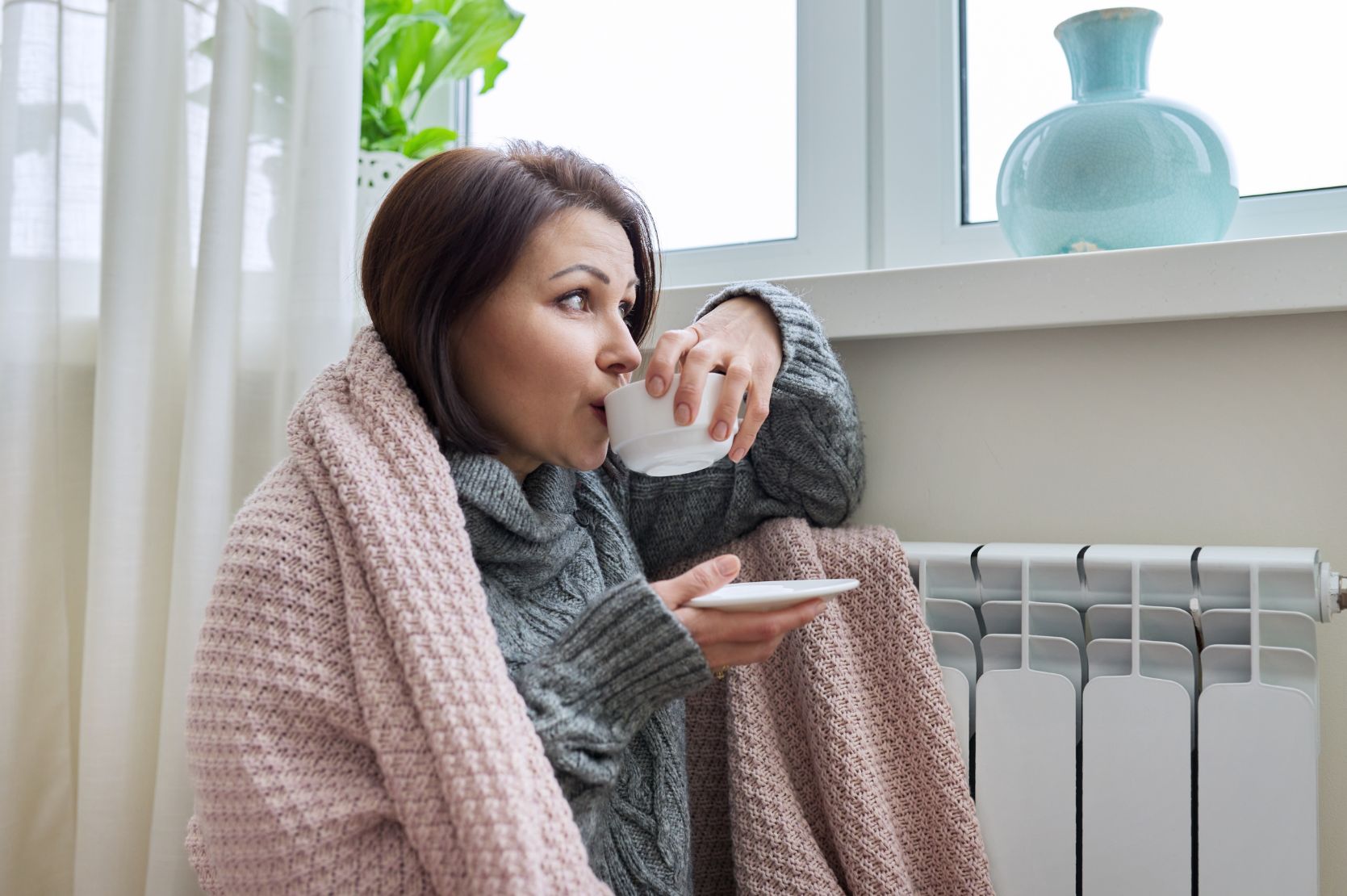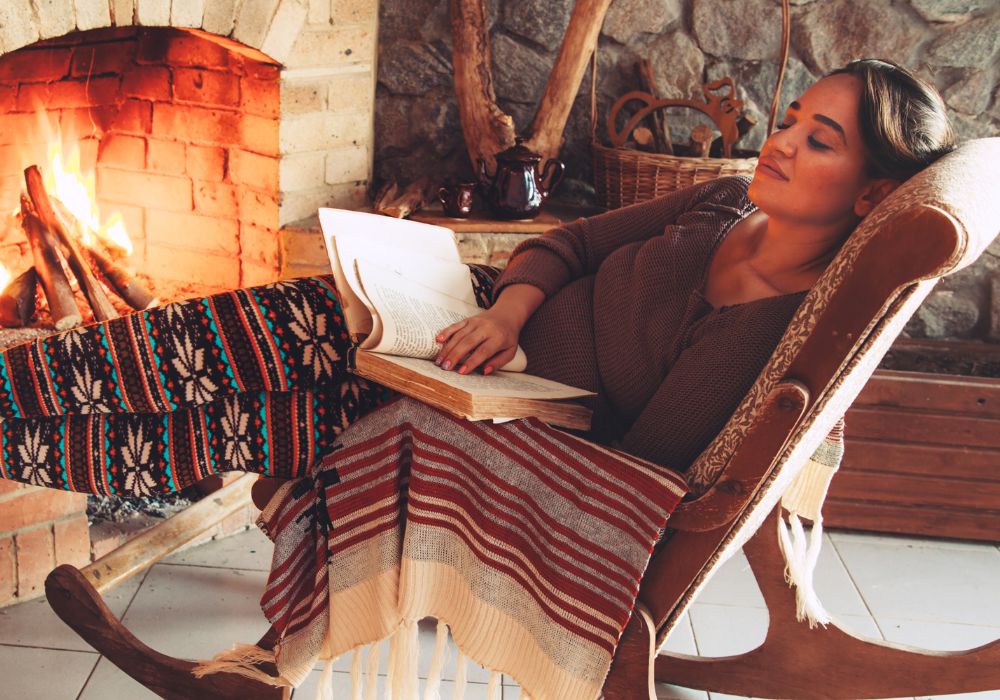
Cold sensitivity and fibromyalgia Cold sensitivity and fibromyalgia
Proven tips for staying warm through the winter
Author: Kerstin Goldstein
Last updated: 17. June 2025
Last winter, I conducted an informal survey among my fibromyalgia coach colleagues at the International Fibromyalgia Coaching Institute on the topic of “cold sensitivity and fibromyalgia”.
Everyone agreed that winter is a challenging time of year for them. Darkness, cold, wet, snow and insufficient sunshine are particularly hard on the soul and bones of people with fibromyalgia.
In this post, I share my colleagues’ recommendations, personal and general winter tips that can help you keep warm and minimize your fibromyalgia symptoms during the cold season.
How cold affects fibromyalgia
Fibromyalgia is a complex condition that brings with it widespread pain, fatigue, and a host of other symptoms. The colder months can be particularly challenging, as low temperatures often worsen symptoms. Poor circulation in cold weather—especially when paired with less movement—can lead to stiffness and increased pain.
On top of that, the lack of sunlight and brightness can impact your mood, sometimes even leading to depressive episodes or simply making you feel down. That’s why it’s so important to stay warm and support your circulation. With the right strategies, winter can become more manageable, and you can reduce some of the discomfort that often comes with the season.
How to stay warm and comfortable at home
Your living space plays a big role in how well you get through the cold months—especially with fibromyalgia. A warm, cozy environment can help ease symptoms and boost your general well-being.
Here are a few practical tips that have worked well for me and my Fibro Coach colleagues:
Improve insulation and stop draughts
Seal windows and doors: Check for any draughts around windows and doors and seal them if needed. Self-adhesive sealing strips or draught stoppers can keep the cold out effectively.
=> In our current apartment, sealing the balcony door made a huge difference—and saved on heating costs too. A quick visit to the hardware store and the problem was solved.
Use heavy curtains and rugs: Thick curtains help keep warmth in, and rugs add a layer of insulation on cold floors. This keeps your feet warm and makes your home feel much cozier.
=> I can clearly feel the difference: my feet stay much warmer on a rug compared to the cold tiles in the kitchen. That’s why there’s now a soft rug under my desk.
Regulate temperature smartly
Install programmable thermostats: If your heating system supports it, programmable thermostats are a great way to keep your space comfortably warm. You can set it to heat the bathroom before you wake up or arrive home—without running the heat constantly.
=> I hate cold bathrooms. That’s why we also have a small electric heater in there, just in case I turn into a popsicle.
Create a cozy atmosphere
Use warm colors and soft materials: Decorate with pillows, blankets, and accessories in warm tones. Yellow and earthy shades create a feeling of warmth, while materials like wool, fleece, or velvet add softness and comfort.
=> In winter, my soft alpaca blanket I purchased in Peru is always nearby. I’m actually wrapped in it right now as I write this article.
Use soft lighting and candles: Lighting affects mood more than we often realize. Candles and warm-toned LED lights can make your space feel comforting and safe, especially on dark days. A daylight lamp can also be a game changer—it gently wakes you up and provides a healthy dose of artificial sunlight.
=> Some of my fibro-coach colleagues swear by daylight lamps. Sitting in front of one for just 30 minutes each morning can work wonders for your mood and energy. I’m definitely getting one for next winter.

Create personal warmth zones
Set up your own cozy corners: Create small personal “warmth oases” at home—like a comfy reading chair with an electric blanket, a side table for hot drinks, and soft lighting. These warm spots are perfect for relaxing, recharging, and gently warming up your body.
=> As I write this, my personal warmth oasis is the fireplace in my father’s house. I could sit or stand in front of it for hours, just listening to the crackling fire. Add a good book or something enjoyable on TV, and I’m in my element. At home, I usually love to lie in the hammock with a blanket, but when I visit my dad, I spent loads of time at the fireplace.
Visit a thermal bath | sauna | infrared cabin: Not everyone tolerates sauna heat well—but if moderate heat suits you, a mild sauna session can give your circulation a real boost. Thermal baths can be a lovely alternative. Some spa centers also offer infrared cabins. I know several people with fibromyalgia who absolutely swear by them—including me.
=> I don’t have an infrared sauna at home, but the gym I go to has one. It’s always a special treat when I get to enjoy this.
Use hot foot baths: they warm up your feet quickly and relax.
=> I love to put essential oils or epsom bath salt in the water.
Keep the air comfortable
Use a humidifier: Dry air from heating systems can irritate the skin and worsen respiratory issues—something many with fibromyalgia are sensitive to. A small humidifier can make a big difference in maintaining a comfortable indoor climate and supporting your overall well-being.
=> I purchased a little room humidifier in a warm golden color for my father’s fireplace room. It even changes colors every few minutes and releases a gentle stream of mist into the air. I love it!
Optimize heating where you can
Create an energy-efficient environment: Modern, energy-efficient heaters can help keep your space warm without driving up energy bills. Of course, not everyone can renovate or move for better insulation—this is more of a long-term consideration. But even small improvements can make a difference.
With just a few adjustments, you can create a warm, inviting environment that makes winter easier to manage—and reduces the impact of fibromyalgia symptoms. A cozy home isn’t just about comfort; it’s also an important step in taking care of your health when the temperatures drop.
What other ideas can you think of to warm your surroundings?
What adjustments have you already made to make your home winter-proof and cozy?
Mail from the Wellness Oasis
Receive valuable tips, exercises, and inspiration about fibromyalgia directly in your inbox. Sign up now and stay motivated on your journey to more ease and well-being!

Diet and exercise: Inner warmth and better circulation
Proper nutrition and regular movement play a key role—not just for general health, but especially for people with fibromyalgia who want to get through the cold months more comfortably.
Here are some practical tips on how to support your well-being in winter through diet and gentle exercise:
Nutrition: Warmth and comfort from within
Exercise: Staying active despite the cold

My personal approach to dealing with fibromyalgia
I firmly believe that every person affected by fibromyalgia can find ways to cope better with the disease. It’s not about “curing” in the traditional sense, but about understanding your own body better and developing methods that make everyday life easier.
Through targeted coaching and an exercise program tailored to you, you can learn to regain control of your body and live your life with more energy and joy again.
Heat, heat, heat: my personal hacks for fibromyalgia and cold sensitivity
My body cools down quickly—especially when I’m working at my desk. Sitting still for long periods doesn’t help, and maybe you know that feeling too. These are my personal tips for staying warm during the workday, and maybe some of them will work for you too.
Layered clothing for cold workdays
If you saw me at my desk in winter, I’d probably remind you of the Michelin Man. I don’t even leave the bathroom in the morning without putting on at least two layers:
On top, I usually wear a tank top, a long-sleeved shirt, a thick sweater—and sometimes even a scarf. For typing, I use fingerless gloves to keep my wrists warm, because cold wrists are something my body really doesn’t like. Wearing multiple layers helps me hold onto body heat much better throughout the day.
External heat sources at my desk
Even though the heating is on, I don’t blast it. My airways don’t respond well to dry, overheated rooms—I tend to get headaches and a scratchy throat. But a basic level of warmth is a must. Here are the tools I keep nearby to help me stay warm and cozy while I work:

What helps my fellow fibro coaches stay warm
Some things that my fellow fibro coaches swear by don’t work for me personally or I haven’t tried it yet. But since we all respond differently to warmth and comfort, I want to share a few more ideas that others have found helpful—even if I haven’t mentioned them yet.
Some swear by …
Which of the tools mentioned make you curious to try them out?
Conclusion: make yourself cozy!
The cold season can be particularly challenging for people with fibromyalgia. However, with the right strategies and tools, you can effectively protect yourself from the cold and alleviate your symptoms.
Fibromyalgia and the cold don’t have to be an insurmountable combination. With mindfulness, preparation and the right tools, you can find well-being and improve your quality of life even in the cold season.
Remind yourself to listen to your body and find the methods of thermoregulation that work for you. Talking to other people or a coach can also be helpful in discovering new tips and strategies.
👉 Book your free initial consultation now. Together we will find your way to more lightness and joie de vivre!